Choosing a Different Route on the Anxiety Highway

Therapy (CBT) for the treatment of OCD and Anxiety.
“Mindfulness” seems to be everywhere these days. In the culture at large, mindfulness is becoming a common practice for many as a means to finding basic peace of mind. And in the field of mental health, mindfulness is quickly coming to be seen as a technique that can help relieve symptoms of OCD, anxiety, and other psychological conditions.
After reading the above paragraph, you may be thinking, “Sign me up!” After all, we live in an era of instant gratification, and most of us usually want a quick fix to our problems. But mindfulness is not something one masters overnight. It is a journey that requires effort, commitment, and dedication. While mindfulness may provide relatively rapid relief to one’s distress in certain situations, it is perhaps better conceptualized as a long-term shift in perspective that allows us to better manage the complexity of human psychological experience. Like learning a new language, mindfulness takes time and patience to master, and ongoing effort to remain fluent.
So what exactly is mindfulness, and how does it apply to OCD and anxiety? A simple definition of mindfulness is that it is the practiced skill of non-judgmental awareness and acceptance of our present-moment experience, including all of our unwanted thoughts, feelings, sensations, and urges. Mindfulness teaches us to accept all of our unwanted internal experiences as a part of life, regardless of whether they are “good” or “bad”. When treating OCD and related anxiety disorders, mindfulness is a tool that can supplement and enhance Cognitive Behavioral Therapy (CBT), which is the gold standard for managing these conditions.
Mindfulness originated in ancient eastern philosophy, and is based on the premise that our attachment to feeling good and our aversion to feeling bad are the cause of much of our suffering. Much of the time, when things are difficult, we take up compulsive or avoidant behaviors in an attempt to make ourselves feel better. I often joke with clients about the fact that we never find ourselves running out of our bedroom with our arms flailing above our heads screaming in fear, “Oh my, I am so happy! Why am I so happy? What if I am happy forever? What should I do?” We only do this when what we are experiencing something we perceive as being “bad” or “wrong” or “unwanted”.
When discussing Obsessive Compulsive Disorder (OCD) and anxiety with clients, I often suggest that we conceptualize life as a metaphorical drive in the wilderness. Imagine that you are driving a convertible car along a beautiful country road. The roof is down and you are enjoying your surroundings. All of a sudden, a wave of anxiety comes over you. You are hit with all sorts of wild thoughts and begin experiencing uncomfortable feelings that seem to come out of nowhere. You quickly begin to feel so overwhelmed that you pull over. After sitting on the side of the road for awhile, you realize that it all feels too scary to keep going. After thinking it through to a point of exhaustion, you make yourself begin driving.
Out of desperation, you quickly put the roof up and roll the windows up as well. You promise yourself that you won’t look out the windows just in case you might see something that will scare you again. You fix your eyes on the road and won’t let yourself even dare to look out the windows. If the anxiety gets bad enough, you may even shut your eyes tight and try to make your way home without looking. Or you may call your family members or friends and make them reassure you that everything will be OK. You may find yourself saying over and over again, “Do not think about anything that makes me anxious right now!” or “Just think good thoughts!” When you return home, you may even vow to never go on that road again. And if you must drive that road again, you may ask someone to come with you in order to ensure that nothing goes wrong throughout the entire drive.
Does any of this ring true for you? Do you find yourself experiencing any of these common reactions to anxiety. When we experience the discomfort of anxiety, we often move directly into reaction mode in an effort to control our feelings. Or, we try to escape them at all costs. Understanding our anxiety can be very difficult when it hits so hard and so fast. Whether our anxiety is completely irrational (common in OCD and other anxiety disorders) or realistic (financial stress at home, relationship issues etc.), we can benefit if we stop to look at our reaction and see if it justifies the amount of energy we are giving it.
Below, I am going to walk you through a few easy steps that can help you be more mindful when faced with fear. These simple steps can also be helpful when dealing with strong addictive urges, depression, and even pain. Using mindfulness, you can learn to view your unwanted thoughts and feelings in a more peaceful and non-reactive way, and strengthen your ability to sit with your discomfort. Please note, this doesn’t mean that we are going to promote struggling or pain. It simply means we are going to focus on learning to better accept unwanted thoughts and feelings, and on responding to them with fewer counter-productive behaviors.
Step One: Become Aware of Your Feelings
When we are anxious, we often react to our thoughts and feelings before we even know they are there. Often, our clients report that they are performing compulsive behaviors before they even know that they are anxious. Others report that while they may notice their feelings when they occur, they then focus all of their energy on trying to get away from them as fast as possible. Step one is to slow down and notice what you are feeling. Are 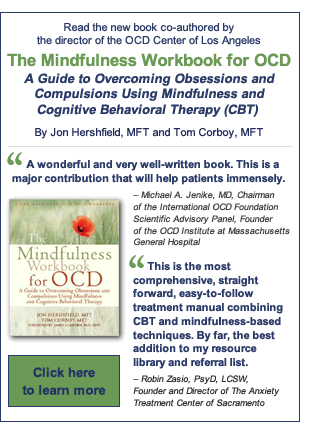 you anxious? Irritable? Sad? Annoyed? Embarrassed? Where do you feel it? Is it in your chest? Shoulders? Stomach? Is it racing in your mind or is it a sensation of heaviness in your entire body? Don’t run from it. Notice it. Don’t immediately react. Inquire first!
you anxious? Irritable? Sad? Annoyed? Embarrassed? Where do you feel it? Is it in your chest? Shoulders? Stomach? Is it racing in your mind or is it a sensation of heaviness in your entire body? Don’t run from it. Notice it. Don’t immediately react. Inquire first!
Step Two: Identify Your Feelings
Once we notice an unwanted feeling, we can choose to label it as “just a feeling”, and we can then begin to understand how our minds send us into reaction instead of acceptance. When we identify what is really going on (discomfort), and not what our anxiety tells us is going on (unbearable catastrophe), then we can begin to work with it instead of against it. Consider that while our unwanted thoughts and feelings may “feel” real, they may not be accurate or even remotely realistic. It is often helpful to identify our thoughts and feelings as just thoughts or just feelings, not truths that are worthy of so much attention.
Step Three: View Your Feelings in a Non-Judgmental Way
Instead of saying, “I hate these feelings” or “these thoughts are very bad,” try to just look at the event and reply with something along the lines of “This event is just what it is”. Taking a non-judgmental stance allows you to understand the event from a rational, objective point of view, instead of a biased and subjective point of view. If you are struggling with this, you may find that talking with a therapist who is trained in mindfulness or Acceptance and Commitment Therapy (ACT) can help you immensely.
Step Four: Consider Other Behavioral Options
Once you begin to understand and label what is really going on, you can begin to consider other non-compulsive and non-avoidant options. When we are hit with a blast of anxiety, it may feel like a huge tidal wave that will destroy us. In OCD and other anxiety disorders, we often move directly from experiencing an unwanted thought, feeling, or sensation, into immediately reacting. We just want to make it all go away as soon as possible. But we have the option of choosing to slow down and seeing how our brains have created an event that feels far more threatening than it actually is. Perhaps putting the top up and rolling the windows up is not be the best idea!
Step Five: Take Action…By Not Reacting
This is the moment of truth. In step five, you will have to be willing to take a risk and challenge your thoughts and feelings by not responding in a compulsive or avoidant manner. You will have to be willing to experience discomfort instead of the relief of immediately being comforted. This is a bold and courageous step. It requires a full commitment to feeling your discomfort. And this is where you will really begin to free yourself from the behaviors that have reduced the quality of your life. In this step, you will make the decision to open your self to experiencing the unwanted thoughts, feelings, or sensations that you find so uncomfortable.
This is the moment where you have two options. You can choose to avoid and/or control your thoughts, feelings, and sensations, or you can choose to allow the moment to be what it is. It is the moment where you decide to either pull over and get short-term relief, or to sit with short-term discomfort in the hope of improving your long-term experience of life.
Step Six: Feel the Curves of the Road Beneath You
If you are willing to commit to sitting with your discomfort and getting back on the road, this step will help you to do it without doing compulsions. Step six is all about just feeling the curves of the road beneath you and not trying to control or change anything about your experience. Sit back and just be in the moment, letting the road and the wheels take you over all the bumps and sharp corners. Take notice of the view, without placing any expectations on how the view “should” look, or how you “should” feel. Let the car take the corners, without trying to hold on too tight. Often, when we loosen our grip on how we want things to be and allow some flexibility, we enjoy our experience much more.
Accept whatever discomfort you are experiencing. Befriend it and learn that it is rarely the horror that you fear it will be. It is almost never the catastrophe that we anticipate. I find it is often helpful to implement some kind of breathing training at this step. Try to breathe into whatever it is that you are experiencing. Breathe and take notice of your breath as you observe what your body is feeling.
The main goal of mindfulness is to accept whatever comes your way. Pot holes! Fear! Cracks in the pavement!! Irritability! Huge hills! Panic! Areas where there is no pavement at all! Feeling out of control! Try to take on each obstacle as it arrives, without anticipating or planning for a specific outcome. Before you know it, you will be home and you will look back and be glad you took the drive.
•Kimberley Quinlan, MFT, is a licensed psychotherapist at the the OCD Center of Los Angeles, a private, outpatient clinic specializing in Cognitive-Behavioral Therapy (CBT) for the treatment of Obsessive-Compulsive Disorder (OCD) and related conditions. In addition to individual therapy, the center offers six weekly therapy groups, as well as online therapy, telephone therapy, and intensive outpatient treatment. To contact the OCD Center of Los Angeles, click here.
Image: “Country Roads” © Capn Madd Matt – Used under a Creative Commons license.












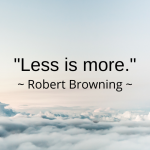





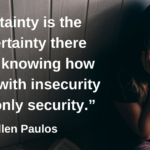

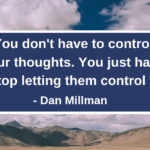






































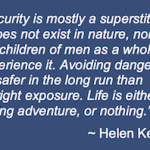
21 Comments
I think this is a wonderful post that shows how mindfulness can truly help in CBT for obsessive-compulsive disorder. Thank you for this easy to understand article that is sure to help many. The awareness and acceptance that you discuss are crucial to recovery.
I’ve gone through quite a bit of mindfulness and DBT therapy. I totally get it intellectually but still have such a HARD TIME implementing it. Thoughts?
Janet,
Thank you for your feedback. I hope the article reaches out to those who are in combat with their discomfort. I find that just leaning into our discomfort a tiny bit is the first step.
Warmly,
Kimberley
MB,
It is not uncommon to experience resistance to mindfulness. When we are experiencing anxiety or depression, leaning into our discomfort often goes against everything our minds and bodies are telling us.
Acceptance is not just accepting the discomfort we are feeling or the thoughts we are thinking. It is also accepting that discomfort is a normal human experience. There is usually a direct relationship between our attachment to things being “perfect” or “right” and the level of suffering we experience. If we are committed to a life free of discomfort, we are going to hate every bump on the road.
I often find that we negotiate the degree to which we accept discomfort. This is usually based on how much of a risk we are willing to take. Acceptance means taking a risk that you may or may not feel a certain way later or that your obsession may or may not come true. Acceptance means taking a risk and experimenting with discomfort in your life, without labeling it as “unacceptable” or “forever”. Ultimately, implementation of mindfulness is the commitment to actually letting the feelings be there and moving on despite their presence.
I hope this helps.
Warmly,
Kimberley
Best explanation i’ve ever read. How do u face anxieties of fear of death. Is the approach the same. Hard to face this when it doesn’t really happen (but hoping it does because your so tired of dealing with it but your so scared of it). Vicious cycles. Anxiety since i was 8 when I choked severely. i’ve have had severe anxiety ever since. I think im afraid of dying my sister feels its the fear of suffering. Thoughts?
Hi Sarah,
Facing the fear of things that have not happened can be effectively done with a technique called Imaginal Exposure.
That said, I think it is safe to say that what you fear actually has happened. No I don’t mean that you died – I mean that you had a legitimately scary and potentially life-threatening experience when you had a severe choking event. I encourage you to have CBT that focuses specifically on that event and your subsequent death-related fears.
Hi, I am from the UK and Very interested in your work. I have had cbt and erp for ocd 2 times and waiting for a third. Because my OCD appears more like GAD these days, i’m sure they are going to implement mindfulness into my cbt. I know however how similar my brain still is, and its still very OCD. Is it best to get straight on a particular course? I get mindfulness and used it before to desensitise obsessions when i had them, now a long walking meditation is where i am currently at.
any info or comment i welcome so much 🙂
k.regards
Daniel, London
Hello there Daniel,
When treating OCD or GAD, we find that combining CBT and Mindfulness is most successful. Meditation is also a great tool for managing anxiety. I encourage you to continue with this while also applying mindfulness throughout the entire day. This would mean accepting whatever you are experiencing and not reacting to it in an adverse way. Try to lean into your discomfort and do not judge its presence.
Warmly,
Kimberley
Hello,
I’ve been suffering from OCD since a few years, yet it never went too far as I was very lucky to find a therapist understanding OCD, as well as websites like yours.
Thus I really managed to overcome most obsessions (fear of having cancer, fear of not loving ly wife, fera of harming people…). They still come back from time to time but I manage quite well to just look at them without interpreting, I am convinced mindfullness is a great weapon against OCD.
Yet I noticed that I manage to deal with OCD only…when I know it’s OCD !
For instance, the worst obsession I had, I think, was fear of not loving my wife… but when I saw it was clearly described as OCD symptom it moved away quickly.
So my question is : are existential thoughts considered as OCD ? For instance stupid questions like “what if everything is fake ? Maybe I am the only one real in the world ? how was life created ?” this is I guess a bit linked to fear of derealization that I had during some bad times…
It looks some people suffer from these thoughts, but it’s not clear whether they are part of OCD symptoms, (it’s not mentionned in your website) and thus if they can be treated the same way as Pure OCD like harm OCD for instance.
Krgds,
Ben
Hello there Ben,
Your question is actually a common one!! To answer your question, it is normal for those with OCD to question if their thoughts or feelings are OCD or, in fact, a “real” problem.
Firstly, I prefer to think of all thoughts and feelings as just thoughts and feelings. If you find your self paying particular attention to one particular thought or one series of thoughts, it is possible that they may be conceptualized as OCD. Here is why:
1. You are spending a lot of time on these thoughts and feelings.
2. These thoughts and feelings are creating significant discomfort and feel “real”.
3. The outcome is being met with aversion (“It would be horrible if everything was fake for the rest of my life”).
4. You are reacting to them as if they were facts, not merely thoughts and feelings.
These reactions would include behavioral compulsions, avoidance of things that trigger this thought or feeling, seeking reassurance that these things will not happen to you or mentally reviewing the obsession in effort to figure them out or reduce your anxiety.
Simply put, anything can become a topic of OCD. The trick is to notice how you are reacting to a thought or feeling and see if there are any trends that are showing. If you are really struggling with this, you might find it helpful to consult with a therapist that uses CBT.
I hope that helps.
Warmly,
Kimberley
Mindfulness has been shown to have a significant impact on depression recovery rates and anxiety issues. It’s interesting to read how it can be used for OCD. Thanks for the post.
Hi Ian – We have been integrating mindfulness with Cognitive Behavioral Therapy (CBT) for OCD for 15 years, and it is incredibly effective for most of our clients. We conceptualize mindfulness as being part and parcel of CBT, rather than as something new or different. Thanks for commenting.
Hi,
I have the same existential questions as Ben does (above).
What if other people are a figment of my imagination? Etc.
I am trying to accept. But what am I trying to accept? I know reality, fake or false, is not going to change. But that does not give me relief. Is it that I have to accept that I have these thoughts and feelings? Or something else?
Greeting Erik, The Netherlands
Hello there Erik,
I think the main idea of acceptance is to accept the true experience you are having. This doesn’t mean just accepting that people may be figments of your imagination. It also means accepting that you are having thoughts about people being figments of your imagination. It also means accepting all the physical sensations that accompany that thought, and accepting that OCD is possibly causing you to experience this thought as if it was a fact. It means allowing this to be an uncertainty in your life.
I completely understand how difficult this is. But, by slowly leaning into this discomfort, you will take away the power anxiety has over you.
Good luck!
Warmly,
Kimberley
i have got very bad ocd hoarding memories and it has become worse since my children were taken away from me and i have been left alone. I’ve tried what i think is mindfullness, but its left me perhaps accepting but totally without interest in this world. can you help me?
Hi Anthony,
Thank you for your comment. The best help we can offer is to provide treatment. You can learn more about our approach to treating OCD and anxiety on our website at https://ocdla.com/. If you would like to discuss online or intensive outpatient treatment, please contact our client coordinators at (310) 824-5200 (ext. 4). Take care.
Hi OCDLA/Kimberly,
I have Pure O and have now finally begun to start accepting my thoughts, feelings & sensations as inevitable & a part of the condition. However this often causes more rumination. isn’t the whole idea to focus as little as possible on these and move on to other thoughts.
Thanks for any advice
Anthony
Hello there Anthony,
Yes, you are not alone. I often hear people report high levels of discomfort when they begin practicing mindfulness. I believe this is because acceptance results in being uncertain, and being “uncertain” often makes us feel the need to “work it out” or find answers. Try not to fall prey to this. This is just OCD’s way of getting you to do compulsions again. Try to just allow uncertainty and the resulting discomfort. Not fighting uncertainty and discomfort is the hardest AND most rewarding part of practicing mindfulness.
Good luck!!!
Kimberley
I have pure o , i dont like my husband and thats real cause he is fat and im slim , his face dosent attract me , i have achild of him , i’ve been married for five years , and every day , i think how this marriage destroy my life , this is fact . , i also have horrible experience with thoughts and questions about god , could i use mindfulness for dealing with my thought about my husband which its really fact , please help me , im so sad .
Can hocd cause false feelings? Like feelings of attraction that just don’t feel right or good please tell me what this means???? I hate them so much and I had the worse night of my life it’s like the attractions come out of know where to everyone basically every thought every thing even objects and I don’t understand amything it’s like my mind is every where and I don’t understand it please help me
Ells,
What you call “false feelings”, I call “feelings”. People with HOCD frequently worry that they are having unwanted feelings, and that these feelings mean something special and important. But by over-attending to your feelings, thoughts, emotions, sensations, etc., you give meaning to things that you would not have even noticed had you not been over-attending. In other words, by focusing on your feelings and examining them, you make mountains out of molehills.
A better option is to stop examining what you are feeling, and to stop giving your feelings some sort of special importance.
That said, there is no way for me to provide you with meaningful help via blog comments. I encourage you to seek treatment with a therapist who specializes in Cognitive Behavioral Therapy (CBT) for OCD.